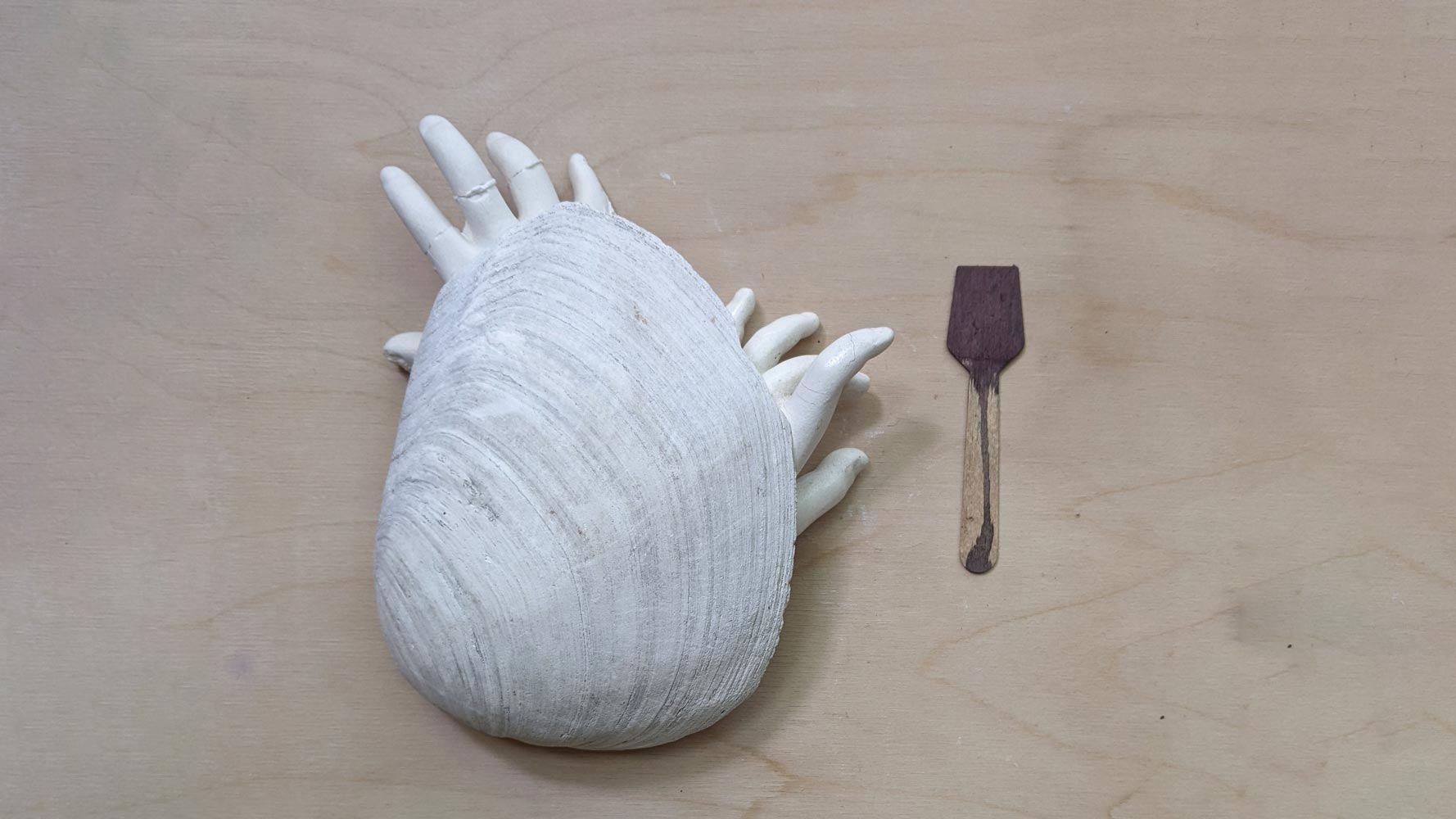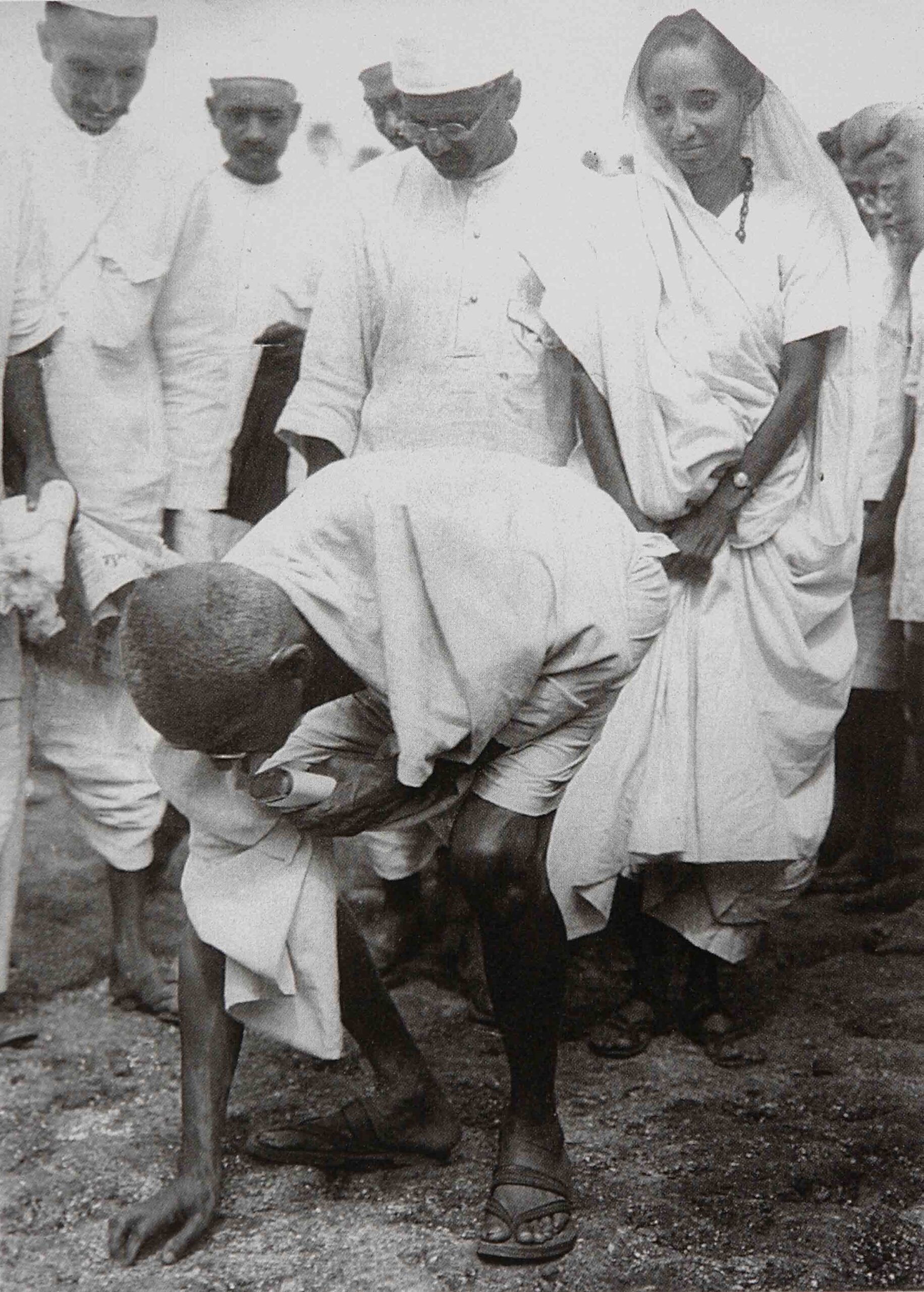[Michel Chossudovsky is Professor of Economics at University of Ottawa]
In Yugoslavia, the IMF has become the steadfast financial bureaucracy of the western military alliance, working hand in glove with NATO and the US State Department.
The International Monetary Fund (IMF) is known to bully developing countries, imposing strong doses of “deadly economic medicine” while saddling governments with spiraling external debts. In complicity with Washington, the IMF often meddles in cabinet appointments in debtor countries. In Korea in the turmoil of the 1997 Asian crisis, the Finance Minister — sacked for allegedly “hindering negotiations” with the IMF – was replaced by a former IMF official.1 In Turkey, also in the wake of an IMF-style financial meltdown (March 2001), the Minister of Economy was substituted by a Vice-President of the World Bank.
But what has occurred in Yugoslavia sets a new record in the abusive practices of the Washington-based international financial bureaucracy: the arrest of a head of State of a debtor nation — demanded by its main creditors — has become “a pre-condition” for the holding of loan negotiations.
While the 31st of March 2001 was Washington’s deadline date for the arrest of President Slobodan Milosevic by the DOS government, another ultimatum as set for transferring the former head of State to the jurisdiction of the NATO-sponsored Hague Tribunal (ICTY). In the words of Secretary of State Colin Powell: “the US administration’s support for an international donors’ conference where Yugoslavia is hoping for up to $1 billion to help rebuild would depend on continued progress in full cooperation with the [Hague] tribunal.”
A State Department spokesman further clarified “that the United States has the power to stop the conference from going ahead in the early summer if Washington is not satisfied.” Meanwhile, the Hague Tribunal has threatened to take the matter before the UN Security Council, if President Milosevic is not rapidly transferred to its jurisdiction.
WITHHOLDING FINANCIAL AID
Very timely . . . At the height of the Yugoslav presidential elections (September 2000), “enabling legislation” was rushed through the US House of Representatives. Washington had forewarned Kostunica — pursuant to an Act of Congress (HR 1064) — that unless his government fully complied to US diktats, financial “aid” would be withheld. The IMF and the World Bank had also been duly notified by their largest shareholder, namely the US government, that: “the US Secretary of the Treasury [would] withhold from payment of the United States share of any increase in the paid-in capital of [the IMF and World Bank] an amount equal to the amount of the loan or other assistance [to Yugoslavia].
Meanwhile, Washington had demanded the setting up of an office of the Hague Tribunal (ICTY) in Belgrade as well as modifications to the legal statutes of Yugoslavia. The latter — to be rubber-stamped by the Parliament—would place the ICTY Tribunal above the jurisdiction of Yugoslavia’s national legal system. It would also allow the ICTY to order on NATO’s behest, the arrest of thousands of people on trumped up charges.
RELEASING KLA TERRORISTS
US officials had also intimated that the prompt release of KLA “freedom fighters” serving jail terms in Serbia was to be regarded as an “additional pre-condition” for the granting of financial assistance: “State Department officials later told UPI that among other steps the United States was looking for, were Yugoslav President Vojislav Kostunica to begin returning Albanians captured during the 1999 Kosovo conflict to Kosovo and for an acceptance of the war crimes tribunal’s jurisdiction inside Serbia where numerous indicted suspects still enjoy immunity.”
An “Amnesty Law” was rushed through the Yugoslav parliament barely a month before Washington’s March 31st deadline. While the victims of the war are persecuted and indicted as war criminals, the Kostunica regime – on Washington’s instructions — has released Kosovo Liberation Army (KLA) criminals (linked to the drug mafias) who committed atrocities in Kosovo.
Meanwhile, these criminals have rejoined the ranks of the KLA, now involved in a new wave of terrorist assaults in southern Serbia and in neighboring Macedonia. The evidence amply confirms that these terrorist attacks are supported and financed by Washington.
“ECONOMIC NORMALIZATION”
Without further scrutiny, the Western media touts the holding of a donors’ conference as “a necessary step” towards “economic normalization” and the “reintegration” of Yugoslavia into the “family of nations”. Public opinion is led to believe that the “donors” will “help” Yugoslavia rebuild. The term “donor” is a misnomer. In fact the donors’ conference is a meeting of bankers and creditors mainly from the countries which bombed Yugoslavia. Their intent is to not only to collect money from Yugoslavia, but also to gain full control and ownership of the Yugoslav economy.
Meanwhile, national laws have been revised to facilitate sweeping privatization. Serbia’s large industrial complexes and public utilities are to be restructured and auctioned off to foreign capital. In other words, rather than “helping Yugoslavia”, the donor conference — organized in close consultation with Washington and NATO headquarters in Brussels — would set the stage for the transformation of Yugoslavia into a colony of the Western military alliance.
Yugoslavia’s external debt is in excess of $14 billion of which $5 billion are owed to the Paris Club (i.e. largely to the governments of NATO countries) and $3 billion to the London Club. The latter is a syndicate of private banks, which in the case of Yugoslavia includes some 400 creditor institutions. The largest part of Yugoslavia’s commercial debt, however, is held by some 16 (mainly) American and European banks which are members of an “International Coordinating Committee” (ICC) headed by America’s Citigroup and Germany’s giant WestDeutsche Landesbank. Other big players in the ICC include J. P. Morgan-Chase and Merrill Lynch.
The ICC — which operates discretely behind the scenes — ultimately call the shots regarding debt negotiations, privatization and macro-economic therapy. In turn, the IMF bureaucracy acting on behalf of both the commercial and official creditors has called for “a restructuring of FRY’s external debt on appropriate terms” underscoring the fact that fresh money can only be approved “following the regularization of arrears.” What this means is that Belgrade would be obliged to recognize these debts in full as a condition for the negotiation of fresh loans as well as settle pending succession issues regarding the division of the external debt of the FRY with the “successor republics.”
FICTICIOUS MONEY
While token “reconstruction” loans are envisaged, vast amounts of money and resources will be taken out of Yugoslavia. In fact, most of the promised “reconstruction” money is totally fictitious.
A $208 million ‘bridge loan” granted by Switzerland and Norway (January 2001 was used to reimburse the IMF. In turn, the IMF had granted $151 million to Belgrade in the form of a so-called “post-conflict assistance” loan. But this “aid” was tagged to reimburse Switzerland and Norway, which had coughed up the money to settle IMF arrears in the first place:
“The [IMF] Board approved a loan [of] . . .US$151 million under the IMF’s policy on emergency post-conflict assistance in support of a program to stabilize the FRY’s economy and help rebuild administrative capacities. Of this amount, the [Belgrade] authorities will draw . . . US$130 million to repay the bridge loans they received [from Switzerland and Norway] to eliminate arrears with the IMF.”
The illusion is conveyed that “money is coming in” and that “the IMF is helping Yugoslavia.” In fact, what remains after the IMF “has reimbursed itself” is a meager influx of 21 million dollars. And broadly the same fictitious money arrangement has been put in place by the World Bank, which has ordered that $1.7 billion in arrears “be cleared” before the granting of fresh loans.
In this regard, Belgrade will be granted a so-called “loan of consolidation” from the World Bank to reimburse the $1,7 billion debt it owes to the World Bank. Little or no money will actually enter the country. In the words of Central Bank governor Mladan Dinkic: “[this] will pave the way for Yugoslavia’s return to the World Bank. `In the first three years, we will receive the so-called AIDA status, which the World Bank gives to the poorest countries . . . [this] is the most favorable arrangement possible, with a longer grace-period and minimum interest, which will allow our economy to pay off the [$1.7 billion] debt and create conditions for receiving new loans.”
More generally, the “reconstruction” money will line the pockets of international creditors and multinational corporations (with trinkets for DOS cronies) while putting the entire Yugoslav economy on the auction block. Assets will be sold at rock-bottom prices under IMF-World Bank supervision. The meager proceeds of forced privatization — in which only foreign “investors” will be allowed to bid — will then be used to pay back the creditors, who happen to be the same people who are buying up Yugoslavia’s assets.
And who will appraise the “book value” of Yugoslavia’s industrial assets And supervise the auction of State property? The large European and US merchant banks and accounting firms, which also happen to be acting on behalf of their corporate clients involved in bidding.
DEADLY ECONOMIC MEDICINE
Fictitious reconstruction money, however, is only granted on condition Yugoslavia implements economic “shock therapy.” The donor-sponsored Program is predicated on “destruction” rather than “reconstruction”. Under the disguise of “economic normalization”, the IMF, the World Bank and the London-based European Bank for Reconstruction and Development (EBRD) have been given the mandate to dismantle through bankruptcy and forced privatization what has not yet been destroyed by the bombers.
In this process, political terror and “economic terror” go hand in hand. The evidence amply confirms that the IMF-World Bank’s lethal economic reforms imposed in more than 150 developing countries have led to the impoverishment of millions of people. In a cruel irony, bitter economic medicine and token financial assistance are presented as “the rewards” for transferring President Milosevic to the jurisdiction of the Hague Tribunal.
While the present IMF program is a “continuation” of the deadly economic reforms first imposed on federal Yugoslavia in the 1980s (and then on its “successor republics”), it promises to be far more devastating.
The Group of 17 economists (G-17) — which controls the Ministry of Finance and Yugoslavia’s Central Bank (NBJ) — are in permanent liaison with the IMF, the World Bank and the US Treasury. A “letter of Intent” outlining in detail the economic therapy to be imposed on Yugoslavia by the DOS government had in fact been drawn up in secret negotiations with the creditors before the September 2000 presidential elections. Mladjan Dinkic — who now holds the position of Governor of the National Bank of Yugoslavia (NBJ) (Central Bank)– had stated that one of the first things they would do under a Kostunica presidency would be to implement economic “shock therapy”: “Immediately after taking the office, the new government shall abolish all types of subsidies . . . This measure must be implemented without regrets or hesitation, since it will be difficult if not impossible to apply later, in view of the fact that in the meantime strong lobbies may appear and do heir best to block such measures . . . This initial step in economic liberalization must be undertaken as a “shock therapy” as its radical nature does not leave space for gradualism of any kind.”
The G-17 does not hide the fact that one of its main objectives consists in breaking social resistance to the economic restructuring program: “Any future democratic regime is likely to face substantial public resistance to privatization and the socio-economic reforms that will accompany it. In the short term, the insolvency and restructuring of Serbian enterprises is likely to generate unemployment or wage cuts for many Employees . . . The servicing of debts and fiscal adjustments are likely to require cuts in public expenditure and the introduction of potentially unpopular new taxes and levies. The purchase of Serbian firms by wealthy domestic and foreign investors may also generate resentment, especially as it will represent a radical break with the former Yugoslav tradition of workers’ or “social” ownership. Nationalist and anti-reformist groups are likely to mobilize popular resistance by exploiting these problems. This form of political opposition would limit the scope for introducing effective economic reform and privatization.”
FREEZING WAGES
The IMF program — put into full swing in the wake of the September 2000 Elections — calls for the adoption of “prudent macroeconomic policies and bold structural reforms,” In IMF lingo, “bold” invariably means the application of “shock treatment” while “prudent” means carefully designed and uncompromising austerity measures.. Upon assuming office, the Kostunica government — under IMF instructions — has deregulated the prices of basic consumer goods and frozen the wages of working people. A new Labor Law setting the minimum wage at 35 percent of the average wage was rubber-stamped by the Yugoslav parliament. In other words, with rising prices coupled with the deindexation of wages ordered by the IMF, the new legislation allows the real minimum wage to slide to abysmally low levels.
Credit has been frozen to local businesses and farmers. Interest rates have already skyrocketed. With the end of the economic sanctions, the IMF has also demanded that import barriers be removed to facilitate the dumping of surplus commodities on the domestic market leading to the bankruptcy of domestic producers. In turn, energy prices are to be totally deregulated prior to the privatization of public utilities, State oil refineries, coal mining and electricity.
In turn, drastic cuts in the social security and pension funds of the Republic of Serbia are envisaged, which would virtually lead to their collapse (See IMF Program, op cit). The restructuring of social programs is a carbon copy of that imposed in neighboring Bulgaria, where pensions paid out to senior citizens plummeted in 1997 to $3 as month.
ENGINEERING THE COLLAPSE OF THE DINAR
The most lethal component of the IMF program, however, is the so-called “managed float” of the exchange rate which — according to IMF Deputy Managing Director Stanley Fischer — is implemented “to better reflect market conditions.”
Yugoslavia’s central bank foreign exchange reserves are of the order of $500 million, the external debt is in excess of $14 billion. Under agreement with the IMF, money (in the form of “precautionary loan”) would be granted to replenish the foreign exchange reserves of the Central Bank with a view to supporting the dinar. Moreover following the Brazilian pattern, the dinar would also be artificially propped up by extensive government borrowing from private banking institutions at exorbitant interest rates thereby fuelling the internal public debt.
In the absence of exchange controls restricting capital flight, central Bank foreign exchange reserves would eventually be depleted. In other words, When the “borrowed reserves” are no longer there to prop up the currency, the dinar collapses. In the logic of the “managed float”, the dollars borrowed under an IMF precautionary fund arrangement, would be reappropriated by international creditors and speculators once the dinar slides, leading to a further expansion of Yugoslavia’s external debt.
In fact, this policy is largely instrumental in triggering hyperinflation. The national currency would become totally worthless. In other words, Prices would go sky high following the collapse of the national currency. In turn, wages would be frozen on IMF instructions as part of an “anti-inflationary program” and the standard of living would plummet to even lower levels. And Yugoslavs are already impoverished with two thirds of the population (according to UN sources acknowledged in the IMF report) with per capita incomes below 2 dollars a day.
It’s the same financial scam that the IMF applied in Korea, Indonesia, Russia, Brazil and more recently Turkey. In this process, various speculative instruments (including “short selling” of currencies) were applied by international banks and financial institutions to trigger the collapse of national currencies. In Korea, debts spiraled in the wake of the currency crisis. As a result, the entire economy was put on the auction block and several of Korea’s powerful conglomerates were taken over by American capital at ridiculously low prices.
In Russia, the ruble became totally worthless following the implementation of an IMF program. The float of the ruble applied in 1992 under IMF advice was conducive in less than a year to a one hundred fold (9900%) increase in consumer prices. Nominal earnings increased ten fold (900%), the collapse in real wages in 1992 was of the order of 86 percent. In subsequent years, real earnings continued to plummet precipitating the descent of the Russian people into extreme poverty.
More generally, the IMF program creates a framework for collecting as well as enlarging the debt through the manipulation of currency markets. It is worth mentioning, in this regard, that barely a few weeks before the arrest of President Milosevic, Turkey was subjected — following the destabilization of its currency — to the most brutal economic reforms leading virtually over night to the collapse of the standard of living. Under IMF ministrations, interest rates in Turkey had shot up to a modest 550%.
WAR DAMAGES
The IMF has acknowledged in its report that the damage caused by NATO bombings is of the order of 40 billion dollars. This figure does not take into account the losses in Yugoslavia’s GDP resulting from years of economic sanctions, nor does it account for the loss of human life and limb, the human suffering inflicted on an entire population, the toxic radiation from depleted uranium and the environmental devastation amply documented by Yugoslav and international sources. Ironically, this study on war Damages was coordinated by G-17 Mladjan Dinkic and Miroslav Labus who now hold key positions in the DOS government. Since his appointment to the position of central bank governor, Dinkic has not said a word about “war damages” in his discussions with Western creditors.
LUCRATIVE RECONSTRUCTION CONTRACTS
No “compensation” for war damages let alone debt relief has been contemplated. In a cruel twist, a large part of the fresh loans – which Yugoslavia will eventually have to reimburse — will be used to rebuild What was destroyed by the bombers. Moreover, under the World Bank-EBRD system of international tender, these loans are in fact tagged to finance lucrative contracts with construction companies from NATO countries: “the big winners [are the Western] telecommunications companies, construction firms, banks and shipping concerns who can rebuild the Danube River bridges, power plants and refineries destroyed by NATO air strikes . . . While European companies, already busy with Balkan projects, have a home-court advantage, U.S. companies such as infrastructure specialists Brown & Root [a subsidiary of Vice President Dick Cheney’s company Halliburton Oil], AES and General Electric could get a piece of the action.”
And what will these companies do? They will sub-contract will local firms and/or hire Yugoslav engineers and workers at wages below one hundred dollars a month. In other words, the borrowed money promised to Belgrade for “reconstruction” will go straight back into the pockets of Western banks and MNCs. In turn, the so-called “prioritization of expenditures” imposed by the IMF means that the State (i.e. Yugoslavia’s own money) would be footing the bill for clearing the Danube and rebuilding the bridges, essentially “subsidizing” the interests of foreign capital. Moreover, IMF “conditionalities” — which require drastic cuts in social expenditures — would prevent the government from allocating its budget to rebuilding schools and hospitals hit during the bombing campaign.
THE COSTS OF THE AIR CAMPAIGN
Accusing the Serbian people and the former head of State of the crimes committed by the aggressor is intended to instill a sense of fear and collective guilt on an entire Nation.
But there is something else which has so far not been mentioned: Washington’s design is to hold President Milosevic responsible for the War not as an individual but as the country’s head of State, with a view to eventually collecting war reparations from Yugoslavia.
In other words, if the former head of State were to be indicted by the Hague tribunal, the country could be held “legally responsible” not only for the costs of NATO’s “humanitarian bombs,” but for all the military and “peacekeeping” expenses incurred since 1992.
In fact, an army of accountants and economists has already evaluated – on NATO’s behest — the costs of the air campaign and the various “peacekeeping Operations.” In this regard, the U.S. share of the costs of the bombing, “peacekeeping” and “refugee assistance” solely in fiscal year 1999 was estimated at $5.05 billion. The amounts allocated by the Clinton Administration to pay for the war and the refugees in FY 1999 were of the order of $6.6 billion. So-called “emergency funding” appropriated by Congress for operations in Kosovo and other defense spending in FY 1999 totaled $12 billion. Moreover, the Department of Defense estimates the costs of deployment of American occupation forces and civilian personnel stationed in Bosnia and Kosovo since 1992 to be of the order of $21.2 billion.
In other words, indicting President Milosevic on trumped up charges raises a fundamental question of legitimacy. It sanctions the bombings as a humanitarian operation. It not only absolves the real war criminals, it also opens up the avenue for the indictment of Yugoslavia as a nation.
The former head of State is indicted; the people are collectively indicted. What this means is that NATO could at some future date oblige Yugoslavia to pay for the bombs used to destroy the country and kill its people.
There is nothing fundamentally new in this process. Under the British Empire, it was common practice not only to install puppet regimes but also to bill the costs of gunboat operations to countries, which refused to sign a “free trade” agreement with Her Majesty’s government. In 1850, Britain threatened to send in its “gun boats” — equivalent to today’s humanitarian air raids — following the refusal of the Kingdom of Siam (Thailand) to sign a free trade treaty with Britain (equivalent to today’s “letter of intent” to the IMF). While the language and institutions of colonial diplomacy have changed, the similarity with contemporary practices is striking. In the words of British envoy Sir James Brooke (equivalent to today’s Richard Holbrooke): “The Siamese Government is hostile — its tone is arrogant — its presumption unbounded . . . Should these just [British] demands firmly urged be refused, a force should be present, immediately to enforce them by a rapid destruction of the defenses of the river… Siam may be taught the lesson which it has long been tempted, . . . a better disposed king placed on the throne, and an influence acquired in the country which will make it of immense commercial importance to England . . . [Note the similarity in relation to Yugoslavia] Above all, it would be well to prepare for the change and to place our own kind on the throne . . . This prince [Mongkut] we ought to place on the throne and through him, we might, beyond doubt, gain all we desire . . . And the expense incurred [of the military operation] would readily be available from the royal treasury of Siam.”
Replace the head of State, impose “free” trade, bill the country for the military operation!
PRECEDENTS OF WAR REPARATIONS: VIETNAM AND NICARAGUA
In fact in the case of Vietnam — which won the war against US aggression — Hanoi was nonetheless obliged to pay war reparations to the United States, as a condition for the lifting of economic sanctions in 1994.
Although the historical circumstances were quite different to those of Yugoslavia, the pattern of IMF intervention in Vietnam was in many regards similar. The decision to lift the sanctions on Vietnam was also taken in the context of a donors’ conference. “Some two billion dollars of loans and “aid” money had been pledged in support of Vietnam’s IMF sponsored reforms, yet immediately after the Conference another separate meeting was held, his time “behind closed doors” in which Hanoi was obliged to fully reimburse . . . the debts incurred by the US installed Saigon military government.” By fully recognizing the legitimacy of these debts, Hanoi had in effect accepted to repay loans that had been utilized to support the US War effort.
Moreover, Hanoi’s acceptance had also totally absolved Washington from paying war reparations to Vietnam totaling $4.2 billion as agreed at the Paris Peace Conference in 1973.
NICARAGUA: “FREEDOM FIGHTERS” AND IMF ECONOMIC MEDICINE
Similarly the 12 billion dollars “reparations” that the US had been ordered to pay to Nicaragua by the Hague International Court of Justice (ICJ) were never paid. In 1990, following the installation of a pro-US “democratic” government, these reparations — ordered by the ICJ — were erased in exchange for “normalization” and the lifting of sanctions. In return, Washington approved a token $60 million in “emergency aid” which was of course conditional upon the payment of all debts and the adoption of the most deadly IMF economic shock therapy: “The United States . . . provides severance pay to government workers fired under the U.S.-mandated [IMF structural adjustment] program to reduce the size of Nicaragua’s government. Among the results: Nicaragua’s social security budget has been slashed from $ 18 million to $ 4 million while unemployment has risen to about 45 percent. Health spending has dropped from $86 per person [per annum] five years ago to $ 18 [in 1991 in the year following the elections]. Pensions for disabled war veterans have been frozen at $ 6.50 per month while food prices have risen [1991] to nearly U.S. levels . . . In the words of a State Department official ‘The US is committed to rebuilding Nicaragua, but there’s only a limited amount you can do with development aid.'”
Yet the US did not hesitate in spending billions of dollars to finance nine years of economic embargo and war in which Washington created and funded a paramilitary army (the Contras) to fight the Sandinista government. Heralded by the Reagan administration and touted by the media as “freedom fighters,” the Contras insurgency was financed by drug money and covert support from the CIA. And in fact the same pattern of covert support using drug money was applied to financing the Kosovo Liberation Army (KLA) with a view to destabilizing Yugoslavia. William Walker, head of the OSCE mission to Kosovo in the months preceding the 1999 war, was responsible together with Coronal Oliver North in channeling covert support to the Contras which ultimately led to the downfall of the Sandinista government and its defeat in “democratic” elections in 1990.
THE ROLE OF THE UNITED NATIONS COMPENSATION COMMISSION (UNCC)
Another case is that of Iraq which — in the wake of the Gulf War – was obliged to pay extensive war reparations. The United Nations Compensation Commission (UNCC) was set up to process “claims” against Iraq. Thirty percent of Iraqi oil revenues in the “oil for food program” are impounded by the UNCC to pay war reparations to governments, banks and corporations. The UNCC “has awarded more than $32 billion [in claims], and more than $9.5 billion has been paid out under the food-for-oil regime.”
These precedents are important in understanding the war in Yugoslavia. Although no official statement has been made by NATO, the framework and bureaucracy of the UNCC could at some future date be extended to collecting war reparations from Yugoslavia. The UNCC’s claim procedures are based on a 1991 UN Security Council resolution which establishes Iraq’s liability for the Gulf war under international law.
In the case of Yugoslavia, President Milosevic is accused by the Hague tribunal for “crimes against humanity and violations of the laws or customs of war.” Following the Iraqi precedent, a decision of the Hague Tribunal concerning President Milosevic could constitute the basis for the formulation of a similar UN Security Council Resolution establishing the liability of the government and people of Yugoslavia for the “direct loss, damage . . . to foreign governments, nationals and corporations”, including “the costs of the air campaign.”
REWRITING HISTORY
Recent events have shown how realties can be turned upside down by the aggressor and its propaganda machine. NATO’s intent is to blatantly distort the course of events and manipulate the writing of modern history. It is therefore essential that the Yugoslav people remain united in their resolve. It should also be understood that the “demonization” of the Serbian people and of President Slobodan Milosevic alongside the triggering of ethnic conflicts is intended to impose the “free market” and enforce the New World Order throughout the Balkans.
Internationally, the various movements against IMF-World Bank-WTO reforms must understand that war and globalization are inter-connected processes. Applied around the World, the only promise of the “free market” is a World of landless farmers, shuttered factories, jobless workers and gutted social programs with “bitter economic medicine” under IMF-WB-WTO custody constituting the only prescription. Moreover, militarization increasingly constitutes the means for enforcing these deadly macro-economic reforms.
Yugoslavia’s struggle to preserve its national sovereignty is — at this particular juncture in its history — a part of the broader movement against the New World Order and the imposition throughout the World of a uniform neo-liberal policy agenda under IMF-World Bank-WTO supervision. Behind these organizations — which routinely interface with NATO — are the powers of the US and European financial establishments and the Western military-industrial complex.
THE END







